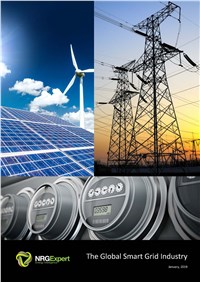The smart grid has gained a lot of column inches in the last decade as the panacea for all problems with the current grid system. The grid’s high carbon footprint; and its inability to integrate a high percentage of intermittent renewable energy capacity from wind and solar, and distributed, small scale energy generators, such as rooftop solar PV plants and small-scale wind turbines; are all but a few of the problems faced in modern grid systems.
The NRG Expert Global Smart Grid Industry report and database provide an overview of the smart grid industry discussing the case for the smart grid and some of the features, challenges and benefits associated with the technological shift taking place. Renewables integration and our ever-increasing need for energy efficiency coupled with an increased demand for energy is driving the development and advancement of smart grid infrastructure.
Legacy grid systems are being adapted to the new realities of rooftop solar and electric vehicles; while newly built grids are adapting to the fundamental shift of decentralized energy production. This report and the accompanying database provide insights into these markets and present some of the technologies that are helping utilities and governments plan and adapt for the future grid systems.
The database gives a by-country overview of the market share of annual demand that is allocated to smart technology. Included in the database figures is the total amount that NRG Expert forecasts will be needed to achieve smart grid goals and comprises estimated annual spending on goods, services, and development of smart grid technology. Utility meters make up a large component of this spend, and this is included in the total. Where a lot of focus in the report is on electricity and the smart grid technologies being deployed there, the NRG Expert Smart Grid Database that accompanies this report includes technology in other utility sectors that is Smart Technology.



